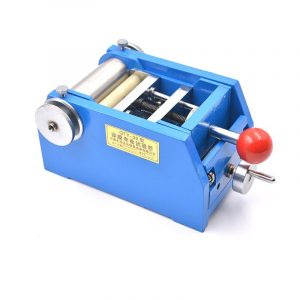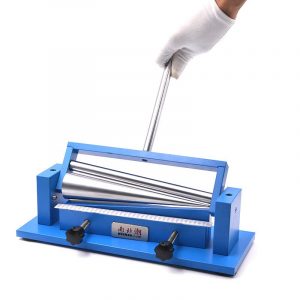Two methods and instruments for testing the flexibility of paint film are discussed
In evaluating the properties of the film, flexibility is a crucial indicator, which reflects the elasticity, plasticity and adhesion of the film under the action of external forces. Flexibility testing can help us understand whether the coating can maintain its integrity and performance during actual use, as well as its response to external shocks. This article will describe two common methods of flexibility testing, the 180° bend test using steel rod and the cone bend tester, and the significance of these test methods in coating film evaluation.
1. 180° bending test of steel shaft rod
According to the GB/T 1731 standard, the flexibility tester uses a set of steel shaft rods of different thicknesses to check whether the film is cracked by bending the film 180°. During the test, shaft rods of different diameters, such as 1mm, 2mm, 3mm, 4mm, 5mm, 10mm and 15mm, are used for 180° bending. The minimum rod diameter without film breakage is used to indicate the flexibility of the film.
This test method takes into account the elasticity, plasticity and adhesion of the film to the substrate. The test results are also affected by factors such as deformation time and speed. Although this method provides an assessment of the flexibility of the film, shaft rods of different diameters can cause discontinuities in the test results.

Two methods and instruments for testing the flexibility of paint film are discussed
2. Test of conical bending tester
In order to avoid the discontinuity of test results caused by different coaxial rod diameters, the conical bending tester becomes another type of flexibility tester. This instrument is specially designed to test the bending properties and bending strength of materials. It consists of a conical shaft, which is made of high-quality stainless steel with wear and corrosion resistance. The size of the cone shaft is 3.1 mm in diameter at the small end, 38 mm in diameter at the large end, and 203 mm in length.
In the test, the sample is placed on the cone axis of the conical bending machine, and the sample is bent and deformed by applying force. By measuring the applied force and the deformation of the sample, the bending properties and bending strength of the material can be determined. This method is simple and easy to operate, and is suitable for testing the bending properties of various materials.

Two methods and instruments for testing the flexibility of paint film are discussed
The flexibility test plays an important role in film evaluation. The flexibility of the film determines its response to external forces and whether it can avoid cracking and falling off. This is directly related to the service life, maintenance cycle and appearance quality of the film. Through the flexibility test, we can understand the performance of the film under different stress conditions, which provides an important basis for the selection and application of the film.
The flexibility of paint film is one of the important indexes to evaluate its performance. The flexibility test helps us understand the performance of the film in actual use by evaluating the elasticity, plasticity and adhesion of the film under external force. The 180° bending test of a steel shaft bar and the conical bending tester test are common flexibility testing methods, which provide different angles of view to evaluate the performance of the film. These test methods provide valuable information for film selection, application and maintenance.
